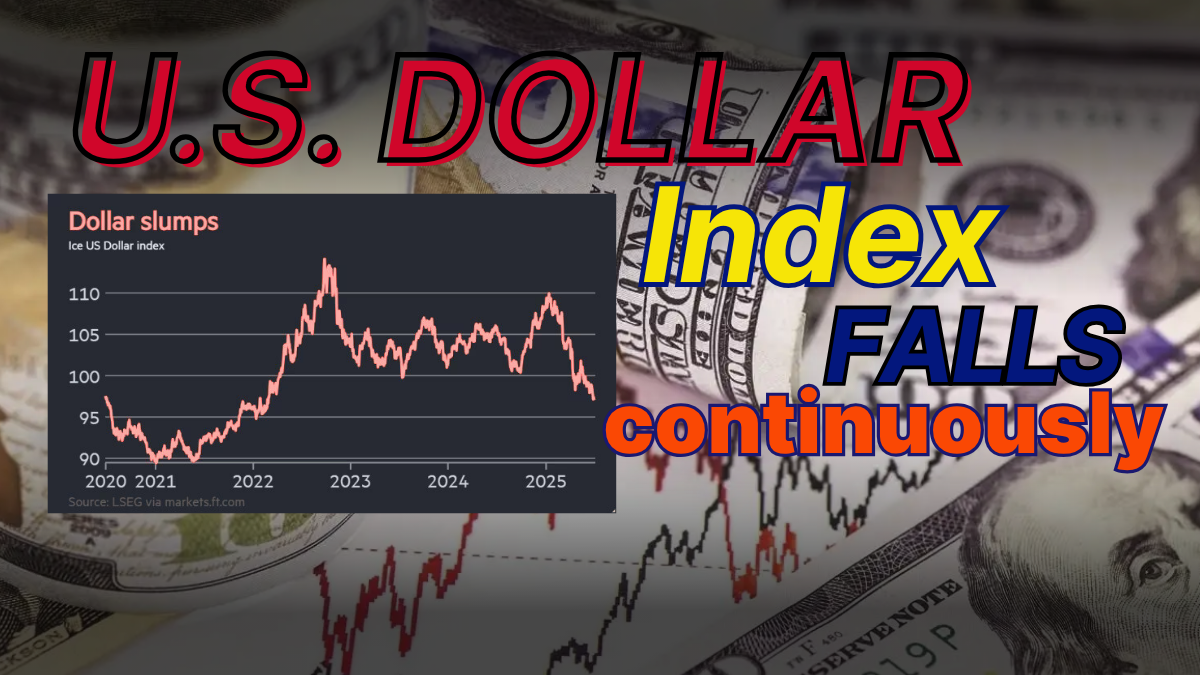Considering That the United States established itself as a dominant global economic force post-World War II, the United States Dollar has held a commanding function in global monetary systems. From its foundations in the Bretton Woods agreement to the more developed petrodollar system, the greenback has actually been both a standard for stability and a symbol of America’s economic impact. Nevertheless, in current years, that grip has actually revealed indications of loosening. From shifting geopolitical obligations to the increase of alternative payment systems, the once-unshakeable supremacy of the US Dollar is being brought into question.

What’s driving this decrease? Could we be seeing the start of a fragmented global financial order? This blog site will check out these concerns by analyzing the factors behind the dollar’s weakening position and the methods nations are embracing to improve their financial landscapes.
The Stronghold of the US Dollar
To comprehend the current scenario, we require to trace how the United States Dollar ended up being synonymous with worldwide trade and financing. Its position as the worldwide reserve currency was sealed by numerous elements:
The Bretton Woods Agreement (1944 ): This system pegged other currencies to the dollar, which was in turn backed by gold. The dollar became a basic step of global trade.
The Petrodollar System (1970s): The agreement in between the US and Saudi Arabia connected global oil trade to the dollar, bolstering its status as the world’s most demanded currency.
US Economic and Military Influence: The nation’s financial influence and its role as a supporting military force made the dollar a “safe-haven” property during periods of instability.
While the dollar still holds considerable sway, its share among global reserves has been decreasing steadily.
Cracks in the Dollar’s Dominance
1. Emerging Alternatives
Nations are increasingly diversifying their reserve holdings to reduce exposure to dollar changes. Notable examples include:
- Increase of Gold Reserves: Central banks worldwide added 3,100 tonnes of gold between 2022 and 2024, indicating a shift towards concrete possessions. Nations like China and India have increase their gold acquisitions to hedge risks.
- Regional Currency Settlements: Efforts among BRICS nations to settle sell non-dollar currencies showcase efforts to minimize dollar reliance.
- Digital Payment Systems: Blockchain technology and Central Bank Digital Currencies (CBDCs) are developing frameworks that bypass conventional dollar-based trade.
2. Geopolitical Strains
Economic sanctions and unilateral trade policies have actually pressed nations to explore options. The freezing of $300 billion in Russian reserves throughout conflicts underscored the vulnerabilities of dollar reliance, particularly in politically sensitive regions. Countries like China and Iran have sought workarounds, such as utilizing yuan-backed systems or direct product trading.
3. Economic Pressures and Policy Missteps
The United States itself has seen internal policy challenges that weaken the dollar’s standing:
- The Federal Reserve’s speed of rates of interest walkings develops market jitters.
- Debt-financed spending bills under the Trump administration included trillions to the nationwide debt, additional shaking investor self-confidence in the dollar’s long-lasting strength.
A Fragmented Financial Order?
The future might not hold a single replacement for the dollar however rather a fractured system with several currencies sharing worldwide duties. Proof includes:
- The Rise of the Chinese Yuan: Though limited in liquidity and convertibility, the yuan has seen growing adoption in bilateral agreements.
- Euro’s Role as Reserve Currency: The euro currently accounts for 16% of global reserves, exceeded just by the dollar.
- The Role of Gold: Now comprising almost 20% of international reserves, gold is ending up being increasingly main to financial policy planning.
This decentralized order offers less dominance for any single currency, with nations selecting tailored blends of reserves to fit their requirements.
What This Means for Countries Like India
India offers an interesting case research study in this global shift. Though heavily dependent on the dollar for oil and import bills, the nation has made strides towards monetary diversification:
- Gold purchases and rupee-dirham trade plans are positioning India for greater self-reliance.
- However, the rupee deals with difficulties in ending up being an internationally relied on currency due to restricted liquidity and depth in international markets.
India’s obstacle is to balance its existing reliance on dollar-centric systems with the growing need for economic autonomy within a multipolar financial world.
The Path Forward
For Global Economies
To run in an evolving financial ecosystem, nations will need to:
- Boost their economic credibility by carrying out policies that welcome long-term investments.
- Prepare to work out trade agreements that focus on decreasing dollar dependence.
- Accelerate adoption of emerging technologies such as CBDCs and blockchain-based payment systems.
For Institutions and services
Personal business reliant on global dollar trade should prepare for prospective volatility by:
- Diversifying their financial holdings.
- Buying alternative payment mechanisms.
- Monitoring trends in reserve allowance by reserve banks.
For Investors
Those with worldwide monetary exposure should view gold and significant currency pairs (like EUR/USD or USD/JPY) as practical hedges versus dollar volatility.
The Road Ahead
The US Dollar may not lose its reserve dominance overnight, but the writing on the wall is clear. The world is recalibrating its monetary systems to decrease over-dependence on any single country’s economy. For individuals, nations, and services alike, adjustment is key. Securing financial stability will need intentional and positive actions that line up with this fragmented monetary reality.
Stay ahead of these changes by gaining much deeper insights into the future of international markets. Share your ideas below or follow us for more professional analyses.
Frequently asked questions
Q1: Why is the United States Dollar’s supremacy being questioned?
A1: The dominance of the US Dollar is being challenged due to increasing worldwide diversity of reserves, countries exploring alternative currencies like the Chinese yuan or gold, and geopolitical shifts affecting rely on dollar-based systems.
Q2: How are countries minimizing dependence on the United States Dollar?
A2: Countries are lowering reliance by carrying out trade in their local currencies, stockpiling gold reserves, forming alliances for currency swaps, and supporting using alternative global currencies.
Q3: What impact could this shift have on international markets?
A3: This shift can lead to increased market volatility, the development of multi-currency trading systems, and possible shifts in investment techniques as power characteristics in global finance progress.
Q4: Should financiers change their portfolios because of these modifications?
A4: Investors may desire to reassess their portfolios to consist of varied possessions or currencies, hedge against potential dangers, and focus on markets that gain from these shifts. Consulting with a financial advisor is extremely recommended.
Q5: What role does gold play in these financial shifts?
A5: Gold is being increasingly considered as a steady store of value in the middle of unpredictabilities, with numerous countries increasing their gold reserves as a hedge against currency variations and geopolitical threats.
Given That the United States developed itself as a dominant worldwide economic force post-World War II, the US Dollar has actually held a commanding role in worldwide monetary systems. From moving geopolitical obligations to the rise of alternative payment systems, the once-unshakeable dominance of the US Dollar is being called into question.
This blog site will check out these concerns by analyzing the factors behind the dollar’s weakening position and the strategies nations are adopting to improve their financial landscapes.
The freezing of $300 billion in Russian reserves during disputes highlighted the vulnerabilities of dollar dependence, especially in politically sensitive areas. The US Dollar may not lose its reserve supremacy overnight, but the composing on the wall is clear.
Click HERE For More



